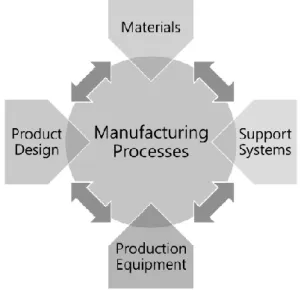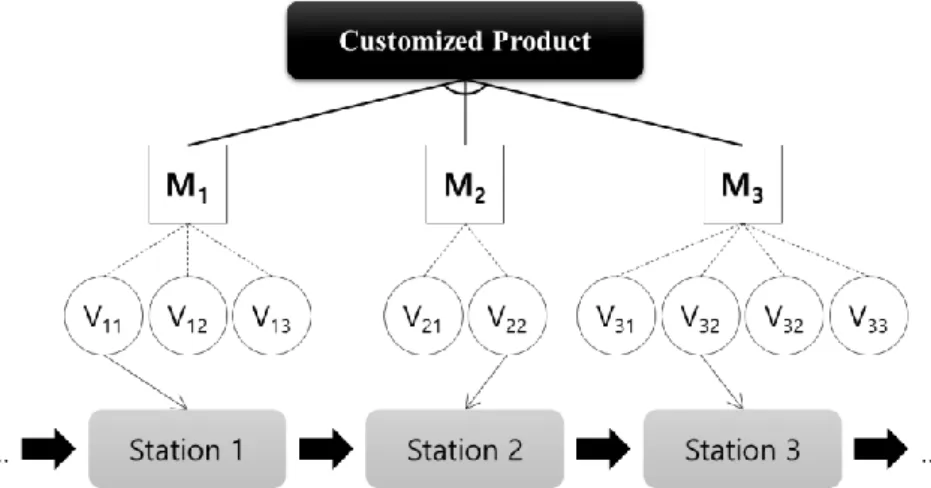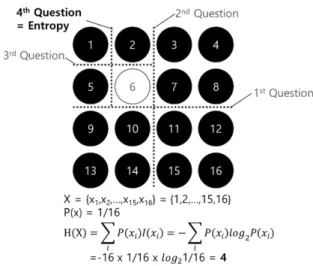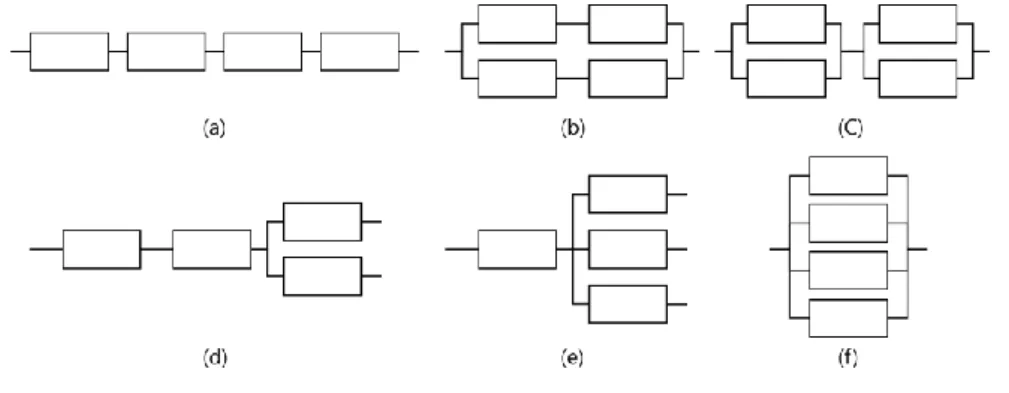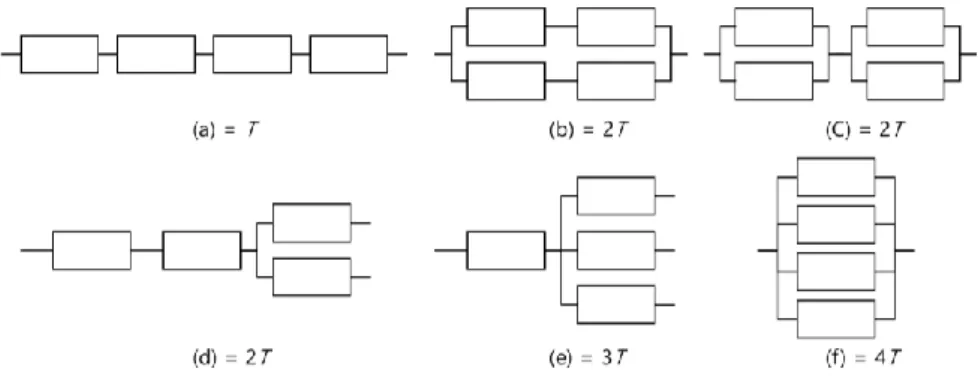In the automotive industry, most major manufacturers have focused their capabilities on the development of mixed model production systems as a key enabler of a flexible production system. However, the mixed model production system faces some problems with the acceleration of the trend of diversification. Product diversification causes a dramatic increase in production complexity and imposes additional processes with additional costs on production systems.
For this reason, an investigation into manufacturing complexity is needed and this paper is one such attempt to estimate manufacturing complexity. This thesis proposes a reliability-based complexity model to estimate the production complexity of mixed-model production systems in the manufacturing industry and validates it through a simple experiment on a small-scale assembly line. Therefore, the production system is very complicated and the estimation of production complexity is more important.
Introduction
Background
But unfortunately they are a kind of trade-off (see figure 1.2), because the complexity is related to how many models/options can be produced in a production system, and the flexibility is related to how insensitive the system is to the different models and options.
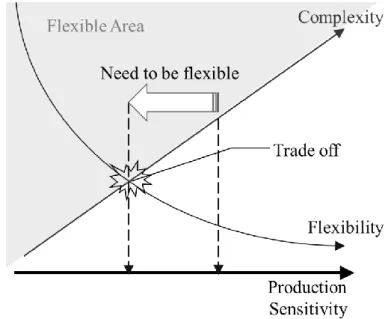
Motivation
Research objective
Literature survey
Manufacturing complexity in the automotive industry
- Definition of complexity
- Mixed-model assembly systems
In this thesis, the definition of complexity in the physical domain is determined by different approaches to the applications. However, recent research has attempted to discover that the recognition and management of complexity depends on the quantity, diversity and content of the information presented, as one of the efforts to achieve the desired outcome (Urbanic & ElMaraghy, 2006). Consequently, the complexity of production depends on the extent of production information, which consists of details of the job, the cycle time and the number of options available.
Mixed assembly line' has a certain number of independent stations connected in series. On this assembly line there are three models of the product denoted by 𝑀𝑖 (𝑗th model). If a particular failure does not meet market demands and product varieties arise in a station, then the entire production line comes to a standstill, causing excess cycle time.

Approaches to measure complexity
- Information theory (Information entropy)
- Entropy model of mixed-model assembly system
- Reliability model of manufacturing system
During the evaluation of the effects caused by the factors on the system, the complexity of the entire system or of each process can be measured. The selection of the b-value determines the measurement of the information content in a random variable Y; b= 2 is one of the most common values where the information content stored in Y is measured in bits (Shannon, 1948). In the context of manufacturing, especially the assembly line, the complexity of operator choice per module (part) variety can be explained by the uncertainty or randomness of the selection process. Uncertainty increases and component selection generally takes additional time, reducing the effectiveness of the process.
Assume that the variants of the nth module are considered as a separate product variant of each configuration. It is also assumed that customer demand does not affect N variants, where the total probability of total demand in variant j is 𝑞𝑗, (j = 1,…, N). When the product has four modules which are assembled at four stations, the cycle time of one station is equal to T at all stations, where the total assembly cycle time for each configuration is shown in Figure 2.9.
The number of modules assembled at station k is denoted by 𝑛𝑘, while the assembly cycle time of station k, (k = 1, …, n) is denoted by 𝑇𝑘. In this sense, the human cognitive reliability model proposed by Yang et al. 1997) is a useful approach to analyze the extent of the system in terms of complexity. They studied the effect of the operator's diagnosis on the system reliability in the decision-making process.
From the cycle time model according to the system configuration, the cycle time 𝑇𝑘 at station k leads to the function 𝑇𝑘 = 𝑛𝑘∙ 𝑇 based on Table 2.1, where 𝑛𝑘 represents the number of modules assembled at station k. 𝐻𝑘 is the complexity of the station, or the information entropy in the station of its own configuration, while a and b are constants that are assumed to be homogeneous operators. According to the study of Bystrom et al. 1994), when assembly time exceeds 17% of the cycle time at a station, operators experience physical fatigue.
When 𝐻𝑘 is zero and the reliability 𝑅𝑘 of the process is 1, there is no complexity at station k (Wang 2011).
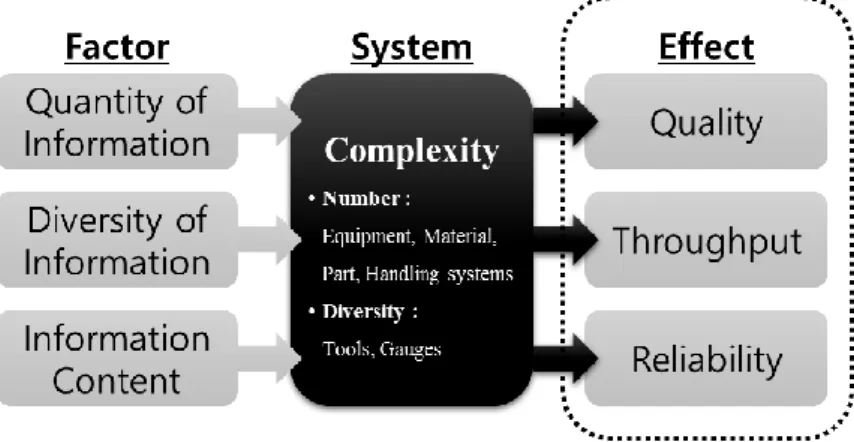
Reliability based complexity model in mixed-model assembly line
- Manufacturing systems of the automotive industry
- Entropy Approach(Operator Choice Complexity)
- Reliability Approach
- Difficulty issues in manual assembly process
- Proposed model to estimate the complexity in the mixed-model assembly line
The following figure is an illustration of important examples of the body shop process in the car assembly system. Basically, the processes are supposed to check the model of the current product and also confirm its option. Entropy calculation starts at the model validation level and moves to the part selection level.
The elements of the manufacturing process in the station: model ratio, option ratio, the number of parts, the number of bolts, the number of nuts, the number of tools, etc. Let 𝑋𝑖 be a set of variables that induce the uncertainty of the station i and 𝑃(𝑋𝑖) is a function of the probability of the station i. With the entropy approach, informational entropy can measure the complexity induced by the system's information.
However, entropy is not enough to evaluate system performance because entropy is not the only factor that affects the complexity that operators feel in the assembly process. Decision time can be considered as one of the other factors affecting complexity. Fatigue can be considered to be due to the difficulty of the process, including mental and physical difficulties.
However, in this study, the hazard rate of the assembly process is assumed to be constant, the parameter is set as 𝛽 = 1. As the result of the experiment, the processing time of each process is recorded and the result is shown in Table 3.2. The data in the table is the average processing time of each station and case.
For some parts, the probability of case 2 is greater because parts of the parts are larger than other parts. The effect of the system is therefore considered by perceptual difficulty parameter of the fatigue effect index. In this thesis, the proposed complexity model is designed considering informational entropy, the reliability of the operator's decision-making process and difficulty issues in manual assembly.
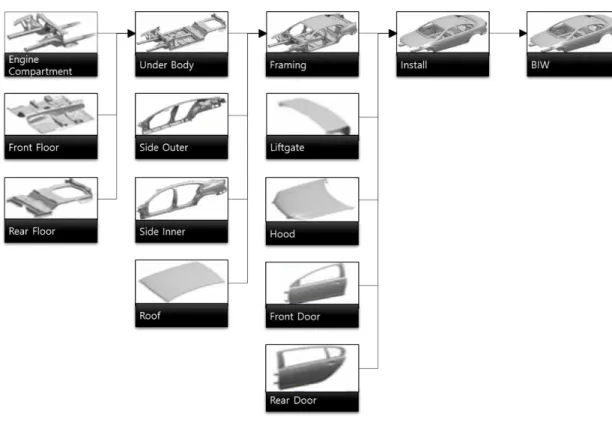
Exploratory case study: Automobile body assembly processes
- Process setting
- Entropy computation
- Reliability computation
- Additional application case study
So the information entropy of the system is calculated by summing the individual entropy of each station. Calculation of the probability mass function of the outcome 𝑥𝑗,𝑘𝑖 given the model demand and options at each station. Calculating the sum of the entropy obtained by STEP 2 across all stations and options.
Furthermore, the engine equipment process is too small a fraction of the entire manufacturing process to impose the weight of random variables. As a fundamental concept of the model, system reliability represents how well an operator completes correct processes within a given cycle time in the assembly line. When an operator causes an error that the operator does not complete processes within its own cycle time, the effects of the error affect the other stations, such as delaying the overall production flow.
For example, if the error occurs frequently on certain drives, the impact of the problem also increases. In this example, if a production engineer can estimate the complexity and reliability of the system, the engineer may be able to prevent the error in advance. The reliability of each station and of all stations represents the status of the stations, regardless of whether the performance of the system is reliable.
However, if production engineers could estimate complexity before implementing a system design, complexity could be reduced without unnecessary costs. If this model can be successfully applied in the automotive industry, it can contribute to the growth of the industry. In other words, reliability can anticipate the system's error rate and then approximately predict production system wastes, such as downtime in a mixed-model assembly line.
In such a situation, if the operator cannot complete the processes within a takt time of the station, the assembly line is stopped and delayed as much as the exceeded time, which is called stand time.
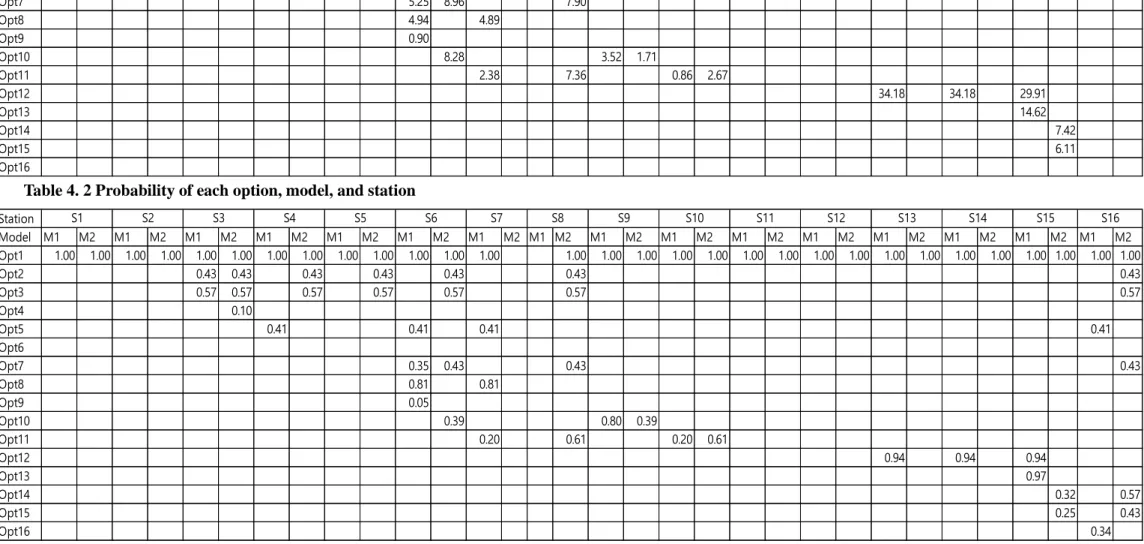
Conclusion and future research
Conclusions and contributions
Future research
Therefore, as a future study, there are two main approaches that the first is the study of production difficulty to adjust the reliability-based complexity model. Manufacturing complexity can affect system reliability and performance, and this paper suggests an approach to model the relationship between them. But, it is still insufficient to define the model and more research is required to modify it.
As mentioned in the previous chapter, the proposed model can be a competitive tool in the manufacturing industry. But the model cannot yet be applied to actual workplaces, as it needs to be refined through several application studies. 2011. “Manufacturing Systems Complexity an Assessment of Manufacturing Performance Indicators Unpredictability, (DET 2011).” In: 7th International Conference on Digital Enterprise Technology, Athens, Greece, 383–391, ISBN.
2012. "Reviewing the Complexity of Manufacturing Systems: Challenges and Prospects." (CIRP- CMS2012) 45th CIRP Conference on Manufacturing Systems, Athens, Greece, CIRP Proceedings, Vol. The variety of products caused complexity for mixed model assembly systems and supply chains. Mechanical Engineering and Industrial and Operations Engineering at the University of Michigan. Analysis of production complexity for optimal resource allocation in the production of mixed models of the automotive industry.
Fujimoto, H., Ahmed, A., Iida, Y., and Hanai, M., 2003, "Assembly Process Design for Managing Manufacturing Complexities Due to Product Varieties," International Journal of Flexible Manufacturing Systems, 15(4), p. 1998), “Dynamic Customer Relationships: High Variety Strategies”, Journal. Hu, “Manufacturing complexity in assembly systems with hybrid configurations and its impact on throughput,” CIRP Annals-Manufacturing Technology. Webbink RF, Hu SJ (2005) Automated Generation of Assembly System Design Solutions. IEEE Trans on Automation Science and Engineering 2(1 ):32–39.
Marcora SM, Staiano W, Manning V (2009) Mental Fatigue Impairs Physical Performance in Humans.Journal of Applied Physiology.

